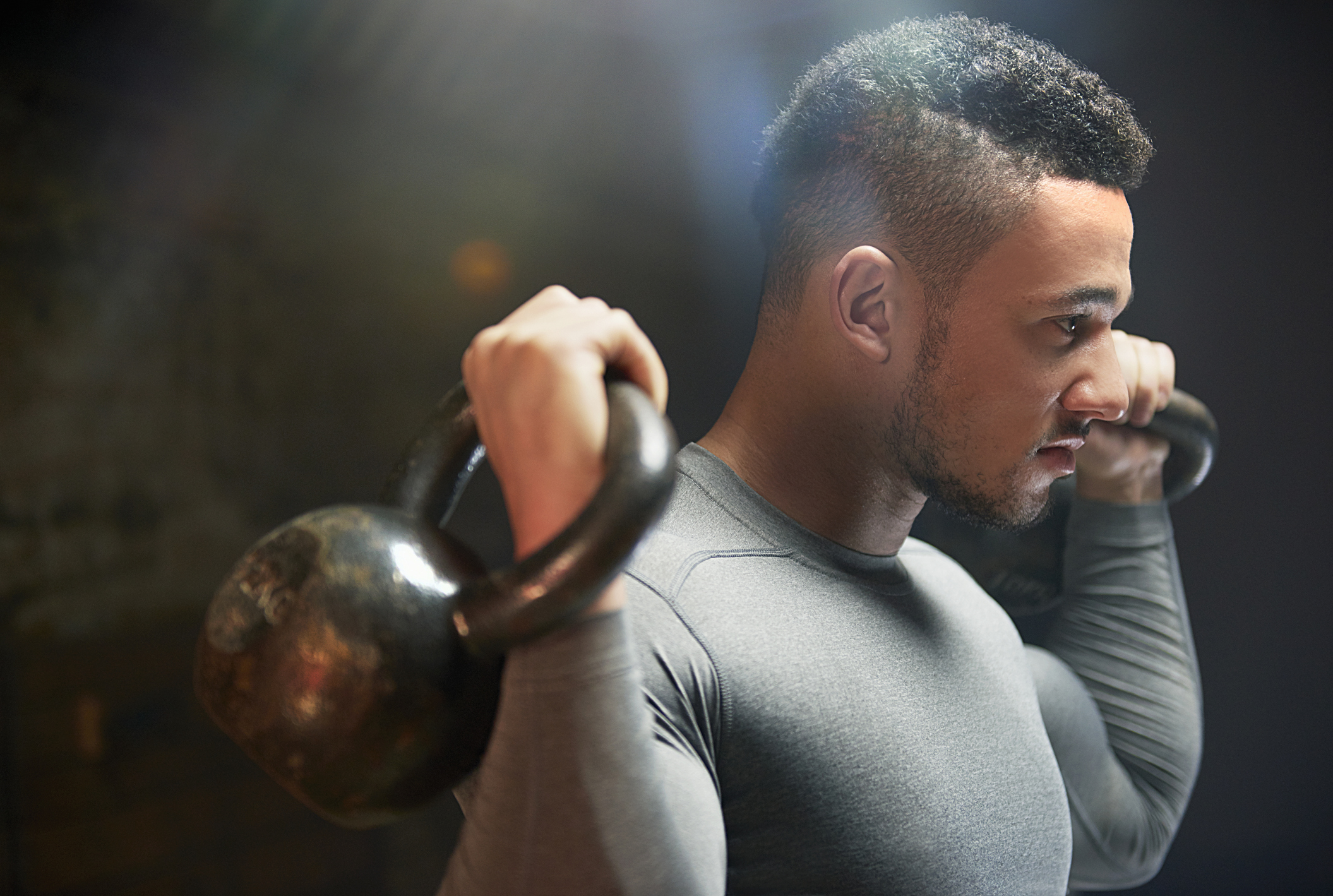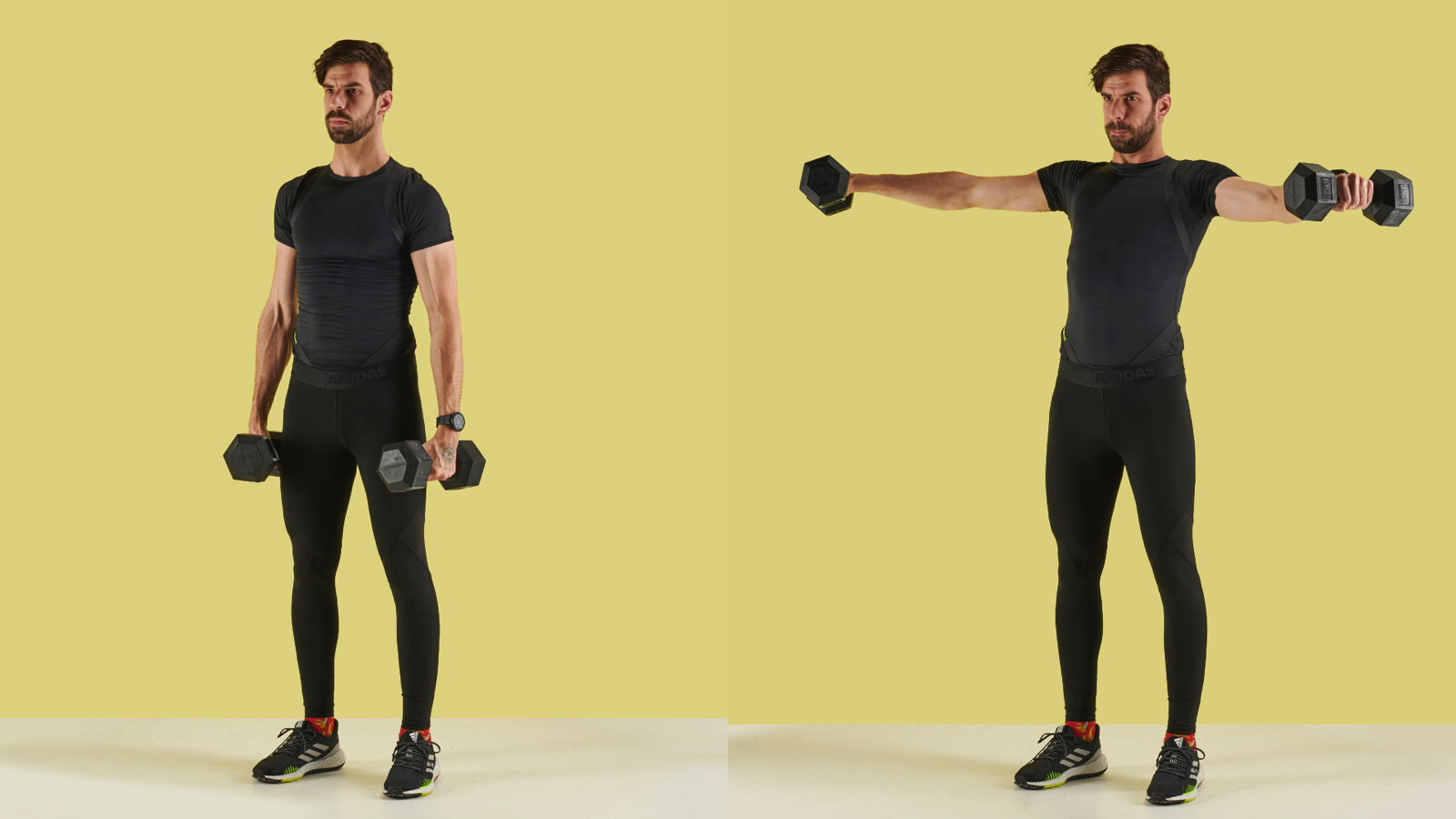

Big arms literally start with having well-rounded and toned shoulders. So, instead of curling those dumbbells or kettlebells all the time, you might want to push them over your head and do the best shoulder exercises for home. Why get big shoulders? Well-defined shoulders can make you look good even if you are fully dressed and training the back of the shoulders can also improve posture too.
As well as that, most of the below shoulder exercises for home attack more than just one muscle. Compound exercises like these can provide you with a full-body workout, without spending ages working out each muscle group individually. If you would like to put your time to good use (and torch fat in the process), compound exercises are the way to go.
A word (or two) on nutrition and safety
If you are into exercising, you probably know that it is very important to consume more protein than an average Joe. If you exercise strenuously, it is recommended to take around 2 grams of protein per body kilogram per day.
You should cover your protein needs from a variety of sources but as a top-up, you can drink protein shakes, which are a combination of protein powder and water or milk/milk substitute and have a protein bar for snack mid-afternoon.
Creatine can help you push more in the gym and has virtually no side effects. It is also one of the most scrutinised supplements in the world and has proven to actually work as advertised.
Another thing that might help you get in 'pump-mode' are pre-workouts. These powders can contain a range of active ingredients like caffeine and taurine, but they're also stimulant-free versions if you prefer not to overdose on caffeine.
And as always, if you are working with heavier weights, make sure you check your surroundings first and that you are properly warmed up. No need to rush into any injuries and as I mentioned a good many times before, you won't impress anyone half-repping weights that are way too heavy for you and injuring yourself in the process. Please be sensible.
Get all the latest news, reviews, deals and buying guides on gorgeous tech, home and active products from the T3 experts
The best shoulder exercises for home
For this workout, usual hypertrophy ranges apply (8-12 reps per set). Working in this range will make your muscles grow and also make you stronger in the process. Before working on any muscle group, do one or two warm-up sets with smaller weights to get your muscles ready for the maximum effort sets.

1. Overhead press
If you are doing one shoulder exercise, make it the overhead press. Sometimes called military press, this compound exercise is an absolute beast and will work a lot more muscles in your body than just your delts. You can substitute the barbell with two dumbbells or even resistance bands.
Muscles worked: deltoids (of course), triceps (big arms right there), traps, upper pecs, core (abs and lower back)
How to do overhead presses: Stand with your legs shoulder-width apart, shoulders open, barbell resting on your upper chest, hands gripping the bar slightly wider than shoulder-width apart, core engaged.
From here, push the barbell up over your head in a straight line. Move your head out of the way as the bar moves up and down. This might require some practice; for the best results, do a few practice reps without the bumper plates loaded on the bar.
Why do we like the overhead press? The deadlift might be the King of Lifts, but the overhead press is most definitely the king of all shoulder exercises. Since you have to put considerable effort into stabilising your body, your core is very much engaged all the way through the movement. Not to mention all the triceps gains doing this compound exercise.

2. Seated shoulder press
The seated shoulder press is a brilliant isolating exercise and is highly recommended if you are new to exercising. By sitting down, you eliminate the effort that goes into stabilising your body so you can fully concentrate on working those delts. You might need a weight bench for this exercise, or alternatively, a simple chair would do.
Muscles worked: deltoids, triceps, traps, pecs (so everything you work with military presses apart from the core)
How to do seated shoulder presses: sit on the bench and turn the backrest up almost all the way. No need to have it at a 90-degree angle, a slight drop probably feels more natural to most.
Raise the dumbbells shoulder width with your arms bent in the elbow in around 90 degrees (I hope everyone has their calculators out by now). Palms facing forward and shoulders are open.
Push the dumbbells up so that your arms are extended (elbows not locked, though), then lower your arms back down to the starting position.
Don't move the dumbbells close to each other in the highest point and definitely don't bump them into each other. The movement should be slow to maximise muscle activation.
Why do we like the seated shoulder press? If you are new to exercising and/or haven't got the strongest core muscles, seated shoulder presses are perfect for you. They will work the shoulder really well and once you built up the core strength, you can move on to doing shoulder presses.

3. Upright row
Shoulder exercises are not exclusive to push days. Upright rows can be performed using barbells, dumbbells or even kettlebells. This versatile exercise should be on your to-do list in the gym.
Muscles worked: upper traps, deltoids and biceps (yeah, baby!)
How to do an upright row: With your feet shoulder-width apart, lift the barbell up so it is resting in your extended arms in front of your quads. Your shoulders are open and your core engaged.
Your hands should be in an overhand drip position and near each other. One way to measure the distance between them is to extend your thumbs toward each other when holding the bar and when they meet, that's roughly the distance your hands should be.
Pull the barbell up towards your chin as far as it feels comfortable. Don't try to twist your elbows in an unnatural position just to touch your chin with the elbows; your shoulders can only go so high in this position. Also, by lifting the bar too high, you also risk twisting your wrists in positions it shouldn't be in.
Let the barbell down gently into the starting position. Again, the movement should be slow and you should concentrate on muscle activation.
Why do we like the upright row? Performed correctly, the upright row is yet another great compound exercise that mainly works the shoulders. Another amazing thing about upright row is that it also works the traps; an often forgotten muscle that can make you look super muscular. You don't play games with people with big traps.

4. Lateral raise
Lateral raises mainly work the biggest part of your shoulder muscles, but they also work the front and the rear delts too, as well as your traps. Most usually performed with dumbbells, side lateral raises can also be performed with kettlebells and resistance bands too.
Muscles worked: delts, traps, core (for stabilisation)
How to do a side lateral raise: Hold the dumbbells next to your quads on the side, legs shoulder-width apart.
You want to raise the dumbbells all the way up to shoulder height, with arms extended (and of course, elbows not locked). The movement should be smooth and try not to jerk the weights up but lift them up.
When you lower the dumbbells back down, make sure you don't hit your legs and bruise yourself in the process.
If you find it difficult to lift the dumbbells up with your arms straight, you can bend the elbows a bit. That reduces the trajectory of the dumbbells.
Why do we like the side lateral raise? As with many of the free weight exercises, the side lateral raise promotes natural movement and therefore much better for your muscles than machine presses, for example. Because you control the weights and the movement, you work a lot of small muscles as well as the delts, which will help you build overall strength, too.

Matt Kollat is a journalist and content creator who works for T3.com and its magazine counterpart as an Active Editor. His areas of expertise include wearables, drones, fitness equipment, nutrition and outdoor gear. He joined T3 in 2019. His byline appears in several publications, including Techradar and Fit&Well, and more. Matt also collaborated with other content creators (e.g. Garage Gym Reviews) and judged many awards, such as the European Specialist Sports Nutrition Alliance's ESSNawards. When he isn't working out, running or cycling, you'll find him roaming the countryside and trying out new podcasting and content creation equipment.